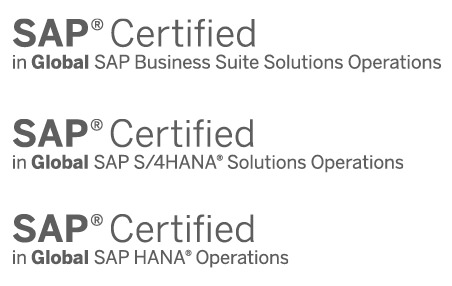IIoT solutions

The Industrial Internet of Things (IIoT) is the basis for digitalised production. It is the core element of connected machines and equipment and a prerequisite for establishing data-driven business models. Syntax is an experienced digitalisation expert, enabling its customers to take full advantage of the benefits of IIoT solutions and transition their production activities to a fully connected future.
Where and how Syntax supports you
Creating an IIoT environment is a complex process involving multiple stages that cover several disciplines. Syntax boosts its customers’ opportunities for maximising value from the Industrial Internet of Things through its consulting services and expertise.

Production and plant networking
Whether you plan to retrofit your production lines with IIoT technologies or use standard interfaces to get fast access to data, our digitalisation experts combine their in-depth technical expertise with lots of industry experience. They know where to focus when it comes to upgrading your systems, and what to leave alone.
Improving transparency with data analysis
Our specialists take information from appropriate data points which they analyse using algorithms to produce a detailed, clear view of all of the relevant production processes. This gives you a complete dashboard of information showing the current plant status in real time.
Predictive maintenance and quality
We design IIoT systems for predictive maintenance, providing you with accurate forecasts of what parts of your production facility require maintenance, to exploit your data to improve the overall quality of production.
Remote maintenance and monitoring
After installation, connected machines and equipment continue to generate a stream of data about their status and potential problems. Our IIoT solutions let you take necessary corrective measures, even from the other side of the world.
The benefits of the IIoT
Enterprises that take advantage of the IIoT benefit from increased transparency of all of their production processes, and can use this to discover previously unknown consequences and connections. This results in a wide range of benefits:

Lower costs
An end-to-end of all processes reveals possibilities for optimisation. Small adjustments at the appropriate location can save vital resources.

Less downtime
Time is money and predictive and efficient maintenance of your systems will maximise the running time of the entire production process.

Improved process expertise
Experience is good, but objective numbers provide you with a reliable knowledge about all of your production systems.

Competitiveness
IIoT is now essential if you want to achieve constant production and keep pace with your competitors.

Reduced response times
IIoT solutions detect when things go wrong in real time, so you can react appropriately just as quickly.

High OEE
Overall Equipment Effectiveness is maximised when you reduce downtime and increase product quality. The result is greater value from the entire line and optimisation of equipment capacities.
Challenges arising with IIoT
The Industrial Internet of Things offers enormous potential for manufacturers and processors. To fully exploit all of the advantages you need to work closely with an experienced partner to overcome some fundamental challenges.
Building the technical framework
To get on the Industrial Internet of Things, enterprises need to connect up machines that supply data in real time and thus generate a useful pool of information. This doesn’t necessarily mean buying new equipment. However, upgrading to appropriate instruments and sensors should always be done with an experienced consultant at your side. Not all potential data endpoints are actually necessary for an IIoT solution. Therefore, when it comes to retrofitting systems for reasons of efficiency, a sense of proportion is vital.
Plan for the future but be realistic
In comparison with non-connected devices, production systems that are connected to the IIoT embody massive potential for efficiencies. However, beyond a certain level, operators of such systems need to weigh up the complexity and effort of going down the route of further optimisation against the expected gains. This is another calculation where an experienced professional’s assessment is vital. After all, expensive updates that add little value will soon eat away at any potential benefits.
Syntax – your partner for the IIoT
Syntax is your perfect partner when it comes to consulting on and implementing your IIoT projects. We have the necessary knowledge and experience across all disciplines and understand the special requirements of manufacturing enterprises. Our company’s history, many years of experience and numerous digitalisation projects have given us unique insights into our customers. These allow us to develop a tailored IIoT strategy with you, in a partnership of equals. Once this is done, we are ideally placed as a technology business to realise your solution and explain why a specific production management system or migrating a specific workload to the cloud will be the best fit for your enterprise’s requirements and objectives. Our IIoT Portal can be configured to your situation and brings together machine data from a range of sources to let you use AI and machine learning to exploit the full potential of your information. In addition, live operating data on factors such as equipment parameters, power consumption, temperature or wear and tear can be viewed, analysed and used to trigger specific actions and alarms.

Trial IIoT easily, with the Syntax Quick Starter packages
Starting out in digital manufacturing doesn’t have to be expensive or complicated. The Syntax Quick Starter packages give manufacturers a simple method of finding out how the IIoT (Industrial Internet of Things) can boost their shop floor, with no lasting commitments. Our experts look after provisioning of the required hardware and software and supply a “turnkey” IIoT solution for testing in the following areas:
- Predictive Maintenance: Rigid maintenance cycles are a thing of the past. Our sensor packages give you the low down on the status of your machines using Amazon Lookout for Equipment at all times, allowing you to carry out necessary maintenance activities in good time during planned shutdowns, on the basis of automatically generated reports.
- Predictive Quality: Smart image recognition improves product quality. Our experts look after installation of the cameras that supply images to e Amazon Lookout for Vision, which uses AI to evaluate the pictures against a database in real time, making production more efficient with less scrap.
All of the Quick Starter packages are also integrated in Syntax Synsights and therefore can be controlled centrally from a clear interface.
FAQ: Industrial Internet of Things
What is the IIoT – a brief definition
The Industrial Internet of Things (IIoT) describes the networking of production equipment for the purposes of control and monitoring through a single platform. The platform itself gathers, collates and processes all of the process data and information such as temperature, pressure and throughput from the connected physical and virtual instruments and devices. The IIoT therefore provides a means for transparently visualising industrial production processes and is the starting point for all informed decisions. Frequently, sensors and other technologies and components can be added to existing systems so that older equipment can also be connected to the network and supply meaningful data. This approach is known as retrofitting.
What is the difference between the IoT and the IIoT?
Just like the Internet of Things (IoT), the Industrial Internet of Things describes the wide-area networking of virtual and physical objects. The IoT and the IIoT are therefore related technologies, but there are some differences. The Industrial Internet of Things can be seen as a specialist implementation, both in terms of the area in which it is used (a production environment) and in respect of the structure or hierarchy of the connected devices. While IoT platforms frequently group together similar connected devices such as the electric scooters in an e-mobility rental scheme, IIoT platforms generally combine several heterogeneous systems in the form of machines with a range of functions that combine to create a single operation.
How can I maximise the benefit from IIoT data?
The production data collected from connected machines provides information on the current equipment status and therefore can also form the basis for predictive maintenance. When the IIoT platform is connected to ERP systems such as SAP, and linked into their data, the benefits rise even further. That is because these connections let you discover previously unknown correlations, such as the need for more frequent maintenance cycles because you are processing harder-wearing materials. If other RPA scenarios are identified for automatic, maintenance-driven rescheduling on other machines, a closed-loop process can be implemented for greater efficiency and constant process optimisation in manufacturing.


